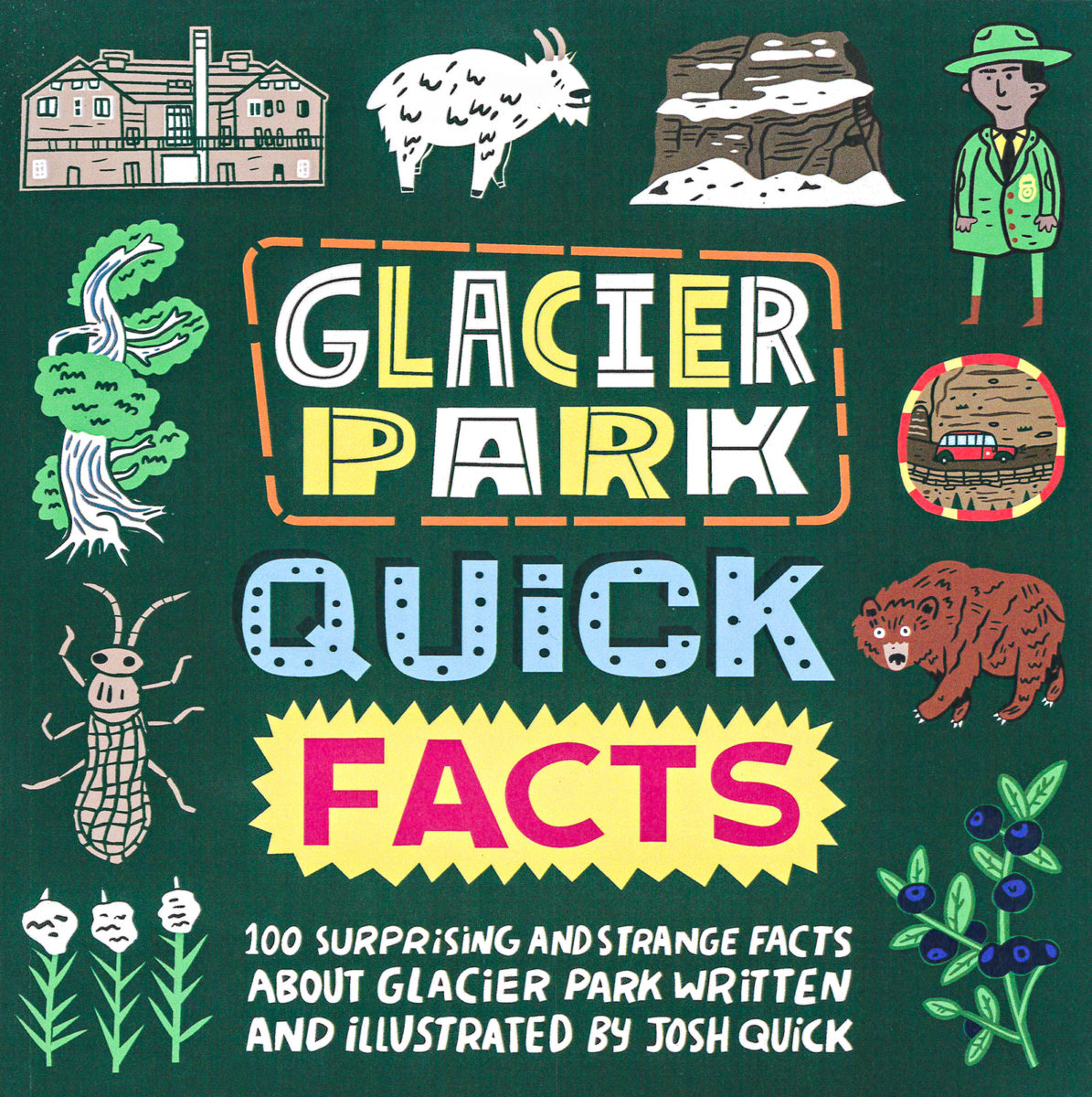The Missoula artist and author Josh Quick is, by his own definition, a “fact nerd,” who struggles sometimes not to share the bits of information, both random and relevant, that he’s accumulated over the 45 years of his life.
The urge was especially bad in his youth, when Quick said he was “such an annoying kid.”
“I would bug people with ‘Did you know? Did you know? Did you know?’ And they’re like ‘Great, Josh. Thank you.’”
Part of the process of growing older as a fact nerd, at least for Quick, is the realization, and acceptance, that not everyone needs to know everything you know. There’s more of a filter, a process of evaluation, a weighing of the facts, if you will, before Quick decides to share what he knows.
To some degree that same mindset has helped Quick in producing a series of books that he started working on five years ago, and that first began to hit shelves about four years ago. His research process, involving library trips, internet searches, and conversations with experts, often yields a master list of facts for a given subject, which he then whittles down to just 100 facts.
Called “Quick Facts,” the series so far offers readers of all ages an illustrated guide to facts about different Montana subjects. The first entry was “Montana Quick Facts,” which came out in 2019. Two years later, it was followed by “Yellowstone Quick Facts.”
Most recently, in late 2022, Quick released a new entry in the series that may be of particular interest to Flathead area readers. Called “Glacier Park Quick Facts,” the book begins with a recitation of some of Glacier’s nicknames – “Backbone of the World,” “Crown of the Continent,” and “The American Alps,” and ends with a handful of huckleberry facts – picking season for the fruit begins in August, it’s the state fruit of Idaho (Montana does not have a state fruit), and it’s used in things like pie, jam, syrup, and ice cream.
In between, there are a range of other bits of information that run the gamut from facts about fossils, to the park’s various Hollywood appearances. “Stromatolites are 1.45 billion year old fossilized algae, located mainly at high elevations on the Eastside of Glacier Park,” Quick writes on one page. On another, he notes that “The opening shot of acclaimed horror movie ‘The Shining’ was filmed in Glacier Park.’”
With each fact comes an illustration from Quick’s hand. The drawings are in a style that Quick has developed over a lifetime of drawing and creating art that stretches back to finding ways to entertain himself and pass the time in the cabin his parents built in the Ninemile area. While in some families a child’s passion for art can become a point of contention, Quick said that wasn’t the case for him. His mother is a potter, and so “I didn’t grow up in a family where art was kind of an alien thing.”
“A lot of how I would be kept busy is my mom would get Xerox paper and give it to me, and I would just draw. That’s how I would self-soothe and relax.”

Connections to Quick’s childhood run particularly deep with the “Glacier Facts” entry into the series. Quick said his father had a kind of fearlessness in nature that came from having worked for the Forest Service, and a passion for fly fishing. The family would take road trips up to Glacier, where hikes would go off the beaten path. And the drive up usually found Quick situated in the backseat with his sketchbook and a stack of magazines.
“I would just get really inspired,” he said.
Of his style of illustration, Quick said that other artists he’s talked to have described it as happy in its tone. In his illustrations for the book, Quick tends to draw with thick, efficient lines, and has an eye for selective use of details that are sometimes tucked into the background of a drawing. Combined with the condensed writing for each fact, and the single page allocated for each one, “Glacier Park Quick Facts” is easy to pick up and tear through. Which is what Quick wants. He said he hopes the books will allow people to consume information casually.
“You can have this in your car, you can have it in your bathroom. It doesn’t bother me at all. I like my phone, I’m not one of those people, but if it’s an alternative to looking at your phone, I’ve done my job.”
The books are also meaningful to Quick on a deeper level in that they are wholly his own vision. Professionally, Quick works as an illustrator, which can mean designing and drawing visuals for local businesses, or creating a large mural at a library. He also works as a user interface developer animating and coding interactive, visual app components for textbooks, and also works as a graphic recorder. As a graphic recorder, Quick said businesses will hire him to create a visual record of a meeting, in which he uses iconography and illustrations to break down the content of the meeting. Those drawings go on a 6-foot-wide piece of paper that Quick uses as a kind of canvas, so that there’s a kind of visual record of the meeting and its contents. All of these jobs though, are about using his talents to meet someone else’s needs.
“These books were really about me having my own thing that’s not connected to something bigger,” Quick said. “This is mine. And I love the idea of people having something I made in their homes.”

Credit: Source link






























